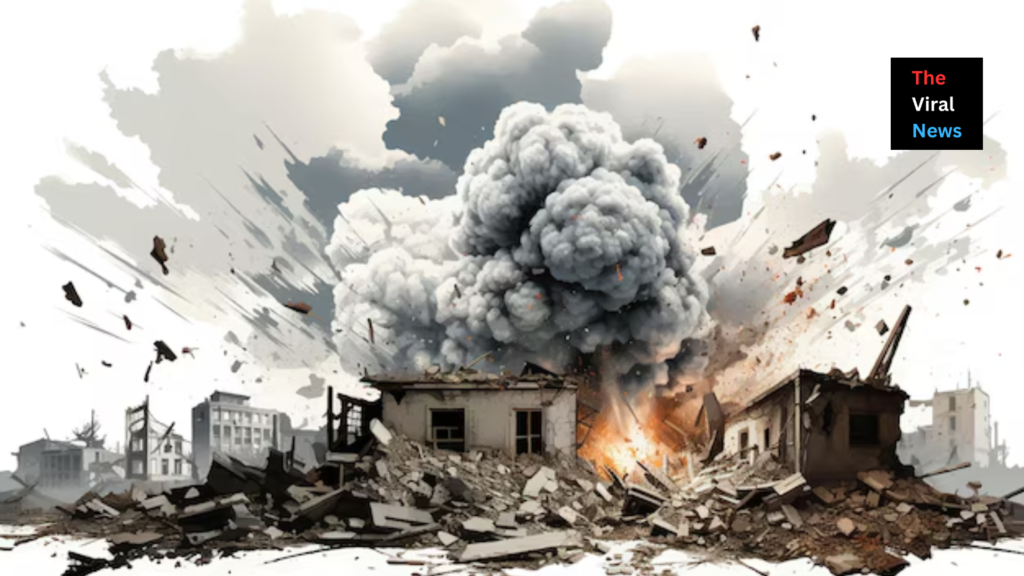In recent weeks, the fear of nuclear war has gripped Europe. This unsettling prospect stems from escalating tensions between Russia and Ukraine, compounded by increased involvement from global superpowers like the United States. A recent missile attack on Russian territory, allegedly facilitated by American assistance, has further stoked fears. With nuclear doctrines being revised, warnings issued, and military actions intensifying, the world watches anxiously as Europe confronts one of its most volatile periods in decades.
The Incident that Shook Russia
On a day that coincided with the 1,000th day of the Russia-Ukraine conflict, six American long-range ATACMS missiles were launched into Russian territory by Ukraine. Russia’s advanced S-400 missile defense system intercepted five of these missiles. However, fragments from the sixth missile landed near a sensitive military installation. While the physical damage was limited, the symbolic implications were massive.
Russia has accused the United States of directly assisting Ukraine in this attack, claiming that such precision strikes are impossible without the on-ground involvement of U.S. military experts. Russian officials have gone further to assert that this war is no longer a conflict solely between Ukraine and Russia but a proxy war with the U.S. actively participating.
This allegation has pushed the conflict into a new dimension, with increased threats and a growing risk of nuclear engagement.
Why Nuclear War Fears Are Rising
- Revised Russian Nuclear Doctrine:
- Russian President Vladimir Putin has made significant changes to Russia’s nuclear doctrine. The new policy permits the use of nuclear weapons against non-nuclear states if they are backed by nuclear-armed nations.
- This revision broadens the scope for retaliation and signals Russia’s willingness to escalate should its core interests be threatened.
- Warnings from Neighboring Nations:
- Countries like Sweden and Finland, often celebrated for their stability and high quality of life, have issued unprecedented warnings to their citizens.
- Emergency advisories urge residents to stockpile food, water, and medicines in preparation for worst-case scenarios. Denmark has also joined the list of nations sending preparedness emails to citizens, underscoring the gravity of the situation.
- Persistent Provocations:
- With the U.S. providing Ukraine with long-range missiles and green-lighting their use against deep Russian territories, the situation has become more volatile.
- Speculations are rife that, as the U.S. presidential elections near, Ukraine may escalate its missile attacks, further provoking Russia.
The Role of Advanced Missile Defense
In the midst of this chaos, Russia has highlighted the effectiveness of its S-400 missile defense system, which successfully neutralized most of the recent missile threats. The S-400’s high success rate has not only bolstered Russia’s confidence but has also attracted global attention, particularly from India, which has procured the same defense system.
The S-400’s performance stands in stark contrast to its predecessor, the S-300, which faced criticism for its vulnerability. For Russia, showcasing the S-400’s capabilities serves a dual purpose: deterring further attacks and demonstrating its technological edge to allies and adversaries alike.
Broader Implications
- Europe’s Garden Turned into a Jungle:
- Europe, often perceived as a bastion of peace and stability, now finds itself on edge. The fear of nuclear conflict has transformed this metaphorical “garden” into a potential warzone.
- Countries long removed from the specter of war are now revising emergency protocols and engaging in public awareness campaigns about survival in the event of a nuclear strike.
- Global Stakes:
- The conflict’s transformation into a proxy war underscores the growing stakes for the international community. The direct involvement of superpowers like the U.S. not only intensifies the regional conflict but also risks dragging the world into a larger confrontation.
- Economic and Humanitarian Concerns:
- Beyond the immediate threat of war, the ripple effects of these tensions are being felt in global markets, supply chains, and humanitarian efforts. A prolonged conflict risks exacerbating these challenges.
Possible Outcomes and Next Steps
The coming weeks and months are critical. With tensions running high, several scenarios could unfold:
- De-escalation Through Diplomacy:
- Efforts from global leaders, including potential interventions by figures like US President Elect Donald Trump, could steer the conflict toward a resolution.
- Continued Provocations:
- Ukraine’s increased missile strikes, potentially backed by U.S. resources, could provoke a harsher Russian response, including the use of tactical nuclear weapons.
- Expanded Conflict:
- If the U.S. and its allies are perceived as direct participants, the conflict could escalate into a broader war, drawing in NATO and other powers.
A Nervous World Watches
As Europe braces itself, the world finds itself on edge. The risk of a nuclear conflict—once thought unthinkable—is now a genuine concern. For Europe, which has long prided itself on peace and stability, this is a stark wake-up call.
The global community must tread carefully, balancing support for Ukraine with efforts to prevent the conflict from spiraling further. Whether this crisis leads to a new Cold War, a devastating escalation, or an eventual resolution remains to be seen. What is certain, however, is that the stakes could not be higher.
Also Read: Biden Allows Ukraine to Strike Deep into Russia
Follow US

